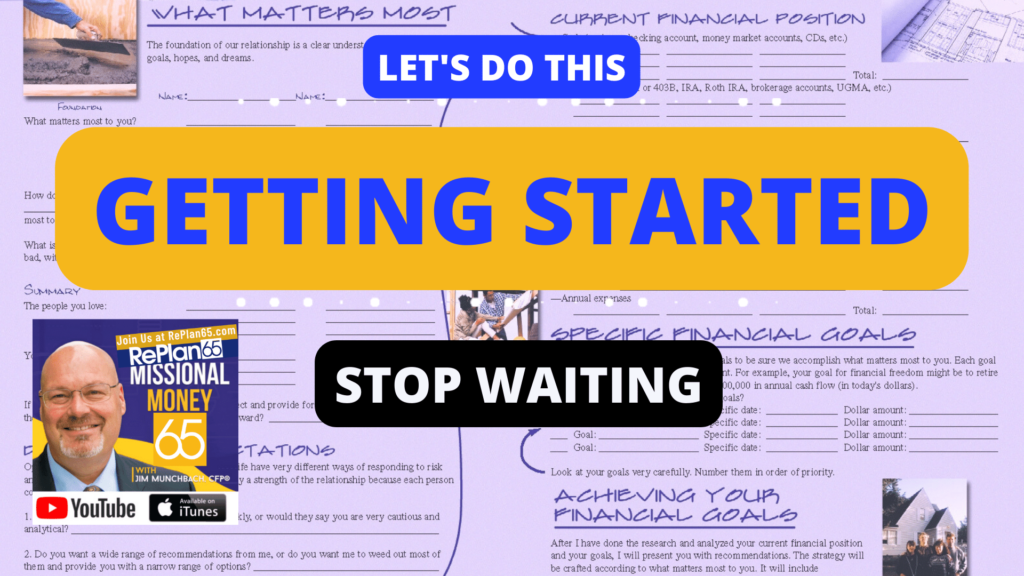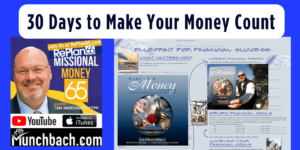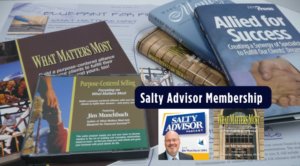Getting Started
Getting started can be a little scary. Or, it can be exciting. I’m getting started with a new Fitness Coach – Justin Howell. Today’s lesson is Getting Started, you can watch Justin’s video on YouTube
Here’s how Justin opens his video: “Thoreau once said that human life is wasted in waiting.”
“Heaven is under our feet as well as over our heads.” “A man is rich in proportion to the number of things which he can afford to let alone.” “Rather than love, than money, than fame, give me truth.” “For my greatest skill has been to want but little.”
Let him practise the minor virtues. How much of human life is lost in waiting! let him not make his fellow-creatures wait. How many words and promises are promises of conversation! Let his be words of fate.
Justin talks about the concept of wasting time and waiting instead of taking action to pursue happiness and do things we love. It emphasizes the importance of not just waiting for the right time to start making positive changes in our lives, such as improving nutrition and exercise habits, but also having a plan that fits our individual needs and motivations.
Justin suggests seeking guidance from fitness professionals and being open to their advice, even if it involves facing challenges because it will be hard.
Justin offers support and complimentary consultations to those who are committed to changing their lifestyle and achieving their goals and he encourages us to start now by thinking about what we want to accomplish and researching ways to help us succeed.
The key message is to not give up hope, seek assistance, and be honest with ourselves when creating a plan for personal growth.
Turning Point
Not long after Connie and I got married, we moved to Austin, Texas, and I got a job making more money than I ever dreamed of making. It wasn’t that much, but to me,it seemed like a fortune! I was able to buy things Connie and I could enjoy, and for a while, it was wonderful. I sure didn’t want to go into debt,but we spent every dime I made. Soon, though, the things I bought weren’t enough to thrill me any longer. I wanted more. I thought I needed more. I hoped the things I was buying could fill up the hole in my heart, but when they didn’t, I tried to cram more in there. But the hole just got bigger.
One day I realized that I had all I’d ever wanted—a wonderful wife, two beautiful sons, a good job, and lots of stuff—but I was miserable.My dream was fulfilled, but I felt emptier than ever. For a new thrill, I started smoking pot.That felt good for a while, but bad decisions followed bad decisions, and soon I was on the verge of losing Connie, my sons, my home, and my job. I’d like to say that I flushed my last dime bag down the toilet because of noble reasons, but that’s not true. I flushed it because I realized it was costing me way too much money.
The answer, I became convinced, was to make even more money. I left my job and became an insurance agent. In that role, I interacted with hundreds of people, and I observed them carefully. Some were just as driven to make money as I was, and they felt just as empty. But surprisingly, many of the men and women who came to my office had a clear, compelling sense of direction for their lives, and they wanted to marshal every resource to fulfill their dreams. These people had learned one of life’s most important lessons: We experience far more joy and fulfillment if we devote ourselves to others instead of spending our resources on our own pleasures.
I had read about these principles of “giving to live” in some Bible classes in college, but these clients were flesh and blood examples who were living those principles. I desperately wanted what they had, but I wasn’t sure how to get it.One major turning point came when I signed up for the Financial Planning Association Residency Program. I went to the conference center a day early to spend time with some friends. That morning, I walked down to the restaurant to get some coffee, and I saw a man in his 50s coming out of the exercise room. He was the epitome of a handsome, fit, fabulously successful, got-it-all-together businessman. Instantly, I hated him. Our eyes met for a second, and we smiled and nodded to each other the way polite businessmen do. I hoped I would never see him again.
That afternoon, I walked in to the first meeting of the Residency Program,and there he was. He introduced himself, “Hello, my name is Rich.” I hoped to avoid him as much as possible, but he was one of my mentors for the entire week. A few minutes later, all the mentors were asked to give thumbnail sketches of their business philosophies and how they serve their clients. When Rich’s turn came, he told the group that he hoped to impart to us how much he treasures his clients. “My clients,” he told us, “are more than account numbers and sources of commissions. They are people who entrust their hopes and dreams to me.” He assured us that what matters most is not how much we know investments, tax law, or retirement planning, and it’s not how well we’ve perfected a particular set of sales techniques to get them to say “yes.” It’s about the people themselves.
Our calling, he said, is amazingly simple and immensely profound: to connect with people on the deepest level to earn their trust so they will share with us their dreams for their families and themselves. Instead of focusing on our own goal of getting them to buy a policy or invest some money so we can earn a commission, the focus shifts dramatically to their needs, their hopes, and their deepest desires. At the end of Rich’s introduction, he spoke a sentence that has resonated in my heart since that moment:“When clients share their most heartfelt dreams with me, I consider that a sacred trust.
”Immediately, I realized: That’s it! That’s what I’ve been looking for:relationships based on trust that surface and enhance our most cherished dreams. That’s what my clients wanted, but that’s what I wanted, too. I had been completely absorbed in myself—my pleasure, my goals, my desires, my success,and my comfort. The circle of my life had been reduced to a dot. As a friend of mine says about his temptation to be preoccupied with himself, “I may not be much, but I’m all I think about.” That was true of me—in spades! When I met with clients, I smiled and tried to look like I was genuinely interested in them,but I was thinking only about selling them products so I could make more money. And in my family, I demanded that they comply with my wishes all day,every day—or I pouted.
But Rich and the clients who had modeled a life of purpose were showing me that real life comes from looking beyond ourselves. I remembered that Jesus told his followers, “Give away your life; you’ll find life given back, but not merely given back—given back with bonus and blessing. Giving, not getting, is the way. Generosity begets generosity” (Luke 6:38). I’d probably read or heard that passage dozens of times, but in Rich and my purpose-filled clients, I saw that it’s true. Those who lived for a higher purpose than their own pleasure experienced the thrill of touching others’ lives and the contentment of knowing their lives really count.
The change in my life has been wonderful . . . if a bit uneven. As I’ve become convinced that living for others brings the most joy in life, I’ve certainly experienced far greater contentment than ever before. Instead of demanding my way all the time with Connie and our kids (and my friends and co-workers and neighbors and anyone else in the universe), I really care about them. Instead of using Connie to meet my needs, I’m more concerned about her needs. Believe it or not, I’m learning to listen. Today,I see my defect of selfishness far more clearly than I did when I was submerged in it, and now I can more easily identify my selfish attitudes and actions so I can make choices to be more gracious and grateful. But make no mistake, I’m still in process, and I have a long way to go.I’m only on the first part of the path, but I’ll tell you, even the beginning of the journey of caring for others is far better than the best day of rampant selfishness.
Plan Setup for RightCapital BayRock
There are a few key steps in setting up your Financial Plan using our RightCapital/BayRock Financial portal. In this post, I’ll outline the steps and some information to help you get the most out of your experience.
But First…
-
Subscribe to The Missional Money Podcast
-
Setup Your Plan using this link – CLICK HERE NOW.
-
You will be prompted to enter a password and create an account.
-
Please bookmark the page and be sure to save your password.
BayRock and RightCapital Mobile App
-
Search for RightCapital
-
Click the green Install button
-
Once the download is complete, click the green Open button
-
Login using the same email and password you used to create your account in previous step.

Give RightCapital Permission
The Dashboard
-
Snapshot
-
Balance Sheet
-
Liquidity
-
Budget
-
Debt
-
Student Loan
-
Tasks
Investment
-
Asset Allocation
-
Allocation Path
-
Sector and Style
-
Concentration
-
Tax Allocation
-
Holdings
Retirement
-
Analysis
-
Stress Test
-
Social Security
-
Medicare
-
Cash Flows
Insurance
-
Life Insurance
-
Disability
-
Long-Term Care
-
Property and Casualty
Education
Tax
-
Tax Estimate
-
Distributions
Estate
-
Checklist
-
Beneficiary
-
Analysis
Profile
-
Net Worth
-
Goals
-
Income
-
Savings
-
Expenses
-
Family
More
-
Vault
-
Calculator
A Few Things We Can Do in Your Financial Plan
-
Social Security Optimization
-
Budget Planning
-
Student Loan & Debt Management
-
Tax Planning & Roth Conversion Optimization
-
Annuity Analysis
-
Insurance Needs Analysis
-
Goal Based Planning
-
Advanced Cash Flow Planning
-
Retirement Planning Analysis
-
Retirement Income Analysis
-
Interactive Scenario Planning
-
Estate Planning Strategies
-
High Net Worth Estate Planning
-
Monte Carlo Simulations
-
Medicare Planning & Premium Calculation
-
Dynamic Retirement Spending Strategies
-
Business Exit Strategies
-
Holdings Details
-
Client Portal and Document Vault
-
Account Aggregation
-
Spending & Budgeting Tools
-
Mobile App
-
And Much More!
Get Started
Download the RightCapital/BayRock Financial App


Download the Thinkific Mobile Learning App

Sign Up Here, its FREE. Share this Link with your Financial Advisor!








